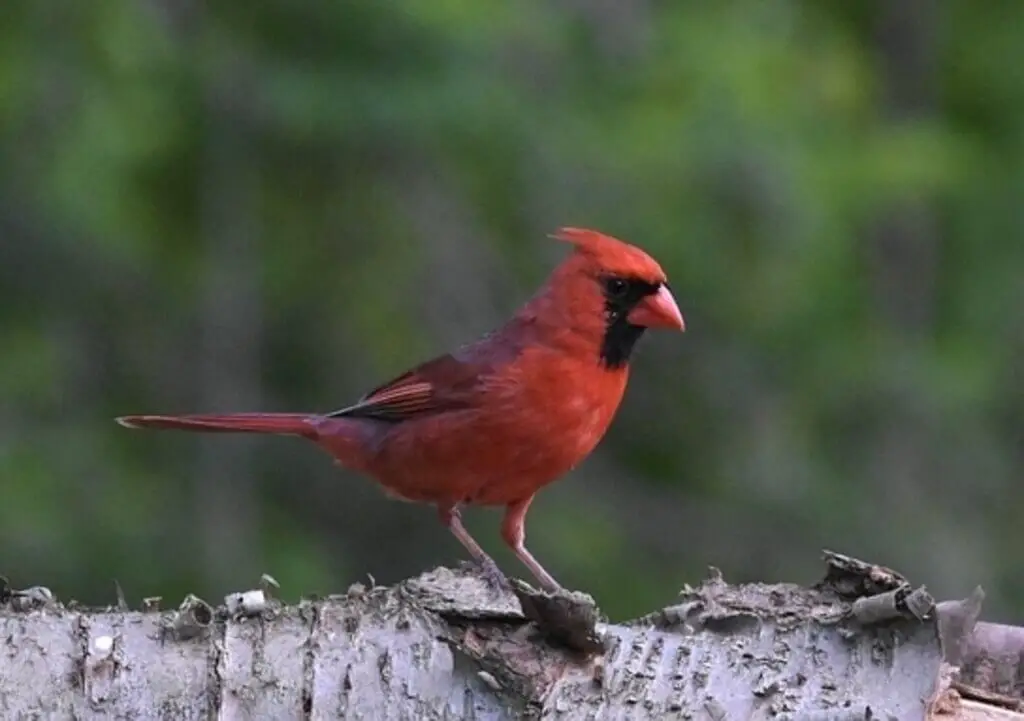
While cardinals typically prefer nesting shelves over traditional birdhouses, providing them with a suitable shelter is essential. In this guide, we’ve compiled a list of the best birdhouses designed with cardinals in mind. Explore our top picks to make an informed decision and enhance your backyard birding experience.
Table of Contents
Best Birdhouses for Cardinals

Little Giant Nesting Box with Perch
The Little Giant nesting box is constructed of high density, impact resistant plastic that will not rust or corrode. The halves can be securely mounted vertically or side by side. The smooth plastic surfaces are easy to clean and do not get as cold as metal in winter conditions.
This nest box features ample ventilation holes for air flow, and a nest entrance perch that makes it easier for wild birds, pigeons or chickens to access the nest. The box floor has been lowered to prevent a loss of bedding during use, and the roof overhang prevents roosting when the unit is used vertically.

Coveside Nesting Perch
Crafted in the USA, this charming nesting perch is made of 100% Eastern white pine that is pesticide-free and sustainably grown. It is used by birds that prefer an open-front nesting box such as Cardinals, Doves, Pigeons, Sparrows, Robins, Catbirds, Thrashers, Phoebes, and Barn Swallows, that like to raise their families in a platform nest.
This easy-to-install perch may be easily installed under eaves, inside a garage or barn or on the side of a building. It installs easily, with just a couple of screws ! Birds will love it as a perfect place to raise their families. The sturdy construction and natural finish make is one nesting box you won’t mind having in plain sight.

SDSNTE Wooden Nesting Box
Give your feathered friends a place to nest in the spring with this durable poplar wood nesting box. This nesting box is designed for pigeons, cardinals, chickens and more. Its heavy-duty construction keeps your birds safe from predators and provides a stylish accent to any yard.
Not only does it provide a safe, natural environment for birds to nest in your yard, garden or farm, it attracts many types of birds including finches, cardinals and more. The pre-assembled sides simply need to be fastened together with the included hardware, and the roof must be screwed on. Your birds will be singing your praises!

Cardinals Nesting Shelf Platform
The perfect way to attract those birds that don’t use bird houses. This handmade nesting platform for cardinals is always a hit with the birds in your neighborhood. High quality nesting shelf that is handcrafted from Western red cedar to provide years of performance.
Platforms are a great way for you to increase the number of birds and species visiting your yard. In addition to attracting Cardinals, it may be used by nuthatches, juncos, sparrows, House Finches and Tree Sparrows. The platform comes assembled with screws that secure it through the wood and into the mounting pole.

Precision Pet Single Nesting Box
Give your birds a sturdy, reliable shelter that is built to last. Keep them safe and warm with the Pro Home Single Wood Nesting Box. The perfect addition to your home or garden, this nesting box provides the safe shelter and privacy your birds need.
The natural design of this birdhouse will fit in well with almost any living space. And thanks to its high-quality construction, it’s durable and long-lasting with proper care.
FAQs:
Best birdhouse design for cardinals
Cardinals do not use birdhouses, and prefer to use a nesting tray or box instead. Try attaching it to a pole or tree and make sure that it is abundant in greenery and install it at a height of about 5–10 feet (1.5–3.0 m).
How to build a birdhouse for a cardinal?
A cardinal nest is much like a robin’s nest, with one exception. A cardinal nest is deeper and placed in a tree or bush. Cardinals are cavity nesters, and do not use the “open cup” type of nest that robins and wrens do.
Building a nesting tray for cardinals will provide them with a place to start their family each spring. Here are the steps to build a simple nesting tray for cardinals:
Step 1: Cut two pieces of 1/4-inch plywood into 11-by-12 inch rectangles. These will be the ends of the nesting tray.
Step 2: Cut two more plywood pieces into 11-by-10 inch rectangles. These will be the sides of the tray.
Step 3: Cut two more 1/4-inch plywood pieces into 10-by-10 inch rectangles. These will be the front and back of the tray. Make sure one has an opening cut in it for access to the inside of the tray once it is assembled!
Step 4: Paint all surfaces, including edges, with latex paint, using a color that blends with your environment (such as “bark brown”) to help camouflage the box from predators like raccoons.
Cardinal birdhouse hole size
Cardinals don’t use enclosed style birdhouses, so hole size does not apply to these birds. They prefer nesting trays or a nest box with an open front with a roof that extends beyond the entrance.
Where to put a cardinal birdhouse?
Place the birdhouse in your garden or yard. You can also place it near the window, so that you can get a better view of the birds. Secure the birdhouse in such a location that predators cannot access it easily.
Where do cardinals nest at night?
Cardinals build their nests in dense thickets, shrubs, dense vegetation or coniferous evergreen trees often near water, as much as 5–10 feet (1.5–3.0 m) above the ground. The nest is a loose platform of twigs, bark strips, and grasses lined with finer materials such as grasses, rootlets and animal hair.
Related Posts:



